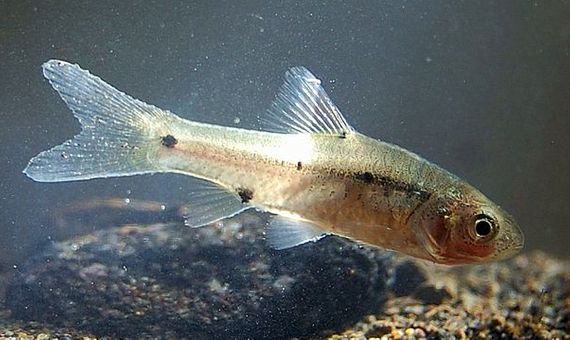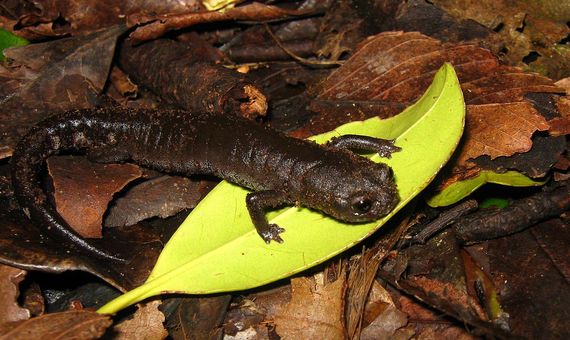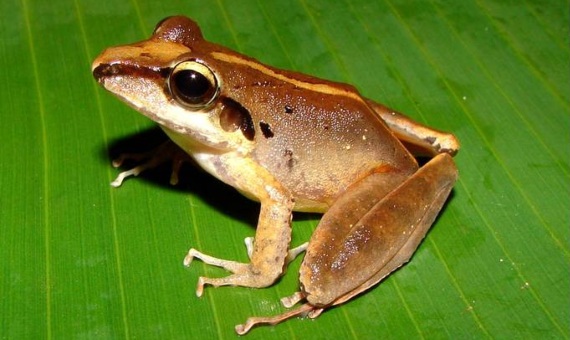The United Nations Decade on Biodiversity came to a close in 2020, an endeavour that began in 2011 with the aspiration to halt the alarming extinction of species, in compliance with the objectives of the Convention on Biological Diversity. However, despite efforts to stop the disappearance of species in what is already considered the planet’s sixth mass extinction, the rate of biodiversity loss is only accelerating, according to the UN. In 2020 we lost more than thirty species, including animals and plants.
Here is a look at some of the animal species that in the last two years have officially joined the list of Earth’s inhabitants that have disappeared forever.
Fifteen fish endemic to Lake Lanao

Human actions and disregard for their consequences can have devastating effects on ecosystems and the conservation of species. In the 1920s, the American ichthyologist Albert Herre described 17 different species of carp in Lake Lanao, the largest lake on the island of Mindanao in the Philippines. These species were found only there, having evolved in the lake itself. But although the area was protected in 1992 after an alarming loss of biodiversity was detected, extensive research in 2020 concluded that 15 of them are now extinct, and the remaining two are now listed by the IUCN as critically endangered or possibly extinct. The cause has been the deliberate introduction of invasive fishery species, which are now dominant in the lake, along with aggressive and destructive fishing practices.
Smooth handfish

Until 2020, no marine fish had been officially declared extinct in modern history. The sad honour of inaugurating this list went to Sympterichthys unipennis. This curious inhabitant of the seabed belonged to the family of the so-called handfish, animals from Australian waters that use their fins to move along the ocean floor. Specifically, this species was described in 1802, but since then no other specimens have ever been collected. In 2020 the IUCN decided to declare it extinct. Thirteen other species of hand-fish are still considered to be surviving, although seven of them have not been observed for at least two decades. Although the causes of the extinction are not known in detail, warming seas due to climate change and pollution of Tasmanian waters, where the species used to live, are thought to be the likely triggers.
Jalpa false brook salamander

The salamander Pseudoeurycea exspectata used to live in the trees of the Jalapa region of Guatemala and was a relatively common sight, but has fallen victim to habitat deforestation and the conversion of forests into cattle pastures. It was last seen in 1976, and since 1985 none of the 16 searches undertaken have succeeded in locating a single specimen. It is now considered formally extinct.
Spined dwarf mantis

The spined dwarf mantis (Ameles fasciipennis) is one of those relatively frequent cases where a species has been found in the wild only once by scientists, and thereafter seems to have vanished completely. It happened in 1871, when this tiny praying mantis was located in the bushes in the Tolentino region of central Italy. It was never seen again and it is thought that perhaps the conversion of Mediterranean scrubland into cultivated fields may have caused its extinction. However, the IUCN acknowledges that the species’ own classification is still unclear. A similar case is that of the French praying mantis Pseudoyersinia brevipennis, described for the first and only time in 1860, but also of uncertain taxonomy.
Bats from Japan and Australia

The only known specimen of the bat Pipistrellus sturdeei, which inhabited Japan until the 19th century, is kept as a jewel in the Natural History Museum in London. In 2020, the IUCN made official a long-anticipated extinction that had already been recognised by Japan since 2014. The same fate has also befallen another bat (Nyctophilus howensis) found only on the small Australian island of Lord Howe. In 1972, a skull was found in a cave, the only known remains, probably the victim of an owl. As has often happened in island habitats, the accidental introduction of rats by ships—the island was settled in the 19th century— decimated the endemic fauna. At Lord Howe an attempt was made to control the rodent population by introducing owls in the 1920s. It did not work, and these raptors probably contributed to the extinction of the bats.
CHINESE PADDLEFISH

In the 1970s, 25 tons of one of the world’s largest freshwater fish were caught annually. At more than three metres long and weighing 300 kilos, the Chinese paddlefish (Psephurus gladius), or Chinese swordfish, was abundant in the basins of China’s two main rivers, the Yangtze and the Yellow. However, overfishing devastated the species, coupled with the fragmentation of rivers caused by the construction of dams, which prevented spawning migrations. The last specimen was sighted in 2003, and in December 2019 a study conducted by the Yangtze River Fisheries Research Institute officially declared the species extinct between 2005 and 2010. “As no individuals exist in captivity, and no living tissues are conserved for potential resurrection, the fish should be considered extinct according to the IUCN [International Union for Conservation of Nature] Red List criteria,” the researchers wrote.
HAWAIIAN TREE SNAIL

The year 2019 opened with the news of an extinction: on January 1st, George, the last individual of the Hawaiian tree snail species Achatinella apexfulva, died. This mollusc, endemic to the island of Oahu, began to be considered as a threatened species in 1981. In addition to the loss of its habitat, a curious cause of its decline was a distant relative, the wolf snail Euglandina rosea, which devours other molluscs and was introduced to Hawaii in the 1950s to control agricultural pests. This invader has been responsible for the extinction of several Hawaiian snails. In 1997, the last specimens of A. apexfulva were collected from the wild in an attempt to save the species. The effort resulted in the birth of George, who in 2011 became the last member of his species, before eventually dying at the University of Hawaii at the age of 14.
Tiburón perdido

A unique case is that of the so-called lost shark (Carcharhinus obsolerus), a fish native to the South China Sea. As the study that described it in 2019 pointed out, this animal was lost before it was found. When researchers examined three old museum specimens of what were believed to be smalltail sharks (C. porosus), they discovered that they were looking at a new species. The specimens, from Thailand, Borneo and Vietnam respectively, were caught more than 80 years ago. As there have been no new sightings since the 1930s, scientists believe it probably became extinct in the last century.
BRAMBLE CAY MELOMYS

The rodent Melomys rubicola, or Bramble Cay mosaic-tailed rat, has gone down in history as the first mammal to become extinct due to anthropogenic climate change. This animal lived exclusively on Bramble Cay, a coral sand cay in the Great Barrier Reef, where it is thought to have arrived from New Guinea on floating driftwood, or perhaps via the land bridge that once linked the two great islands. The species fed on the vegetation that covered its tiny 250-metre-long island, but increased storms due to climate change have wiped out its only livelihood. In 2009 the last specimen was sighted, and in 2019 the Australian government officially declared it extinct, although four years earlier it had already joined the IUCN list of extinct species.
ALAGOAS FOLIAGE-GLEANER
In the summer of 2019, the world was shaken by the extensive fires in Brazil, which in twelve months destroyed more than 9,000 km2 of forest. Of course, this loss took its toll in terms of species. Deforestation is the cause of the disappearance of the Alagoas foliage-cleaner (Philydor novaesi), a bird that was already rare when it was first described in the Atlantic forests of the Brazilian coast in 1979. In 2011 the last confirmed sighting occurred, and in 2019 it was classified by the IUCN as extinct.
POʻOULI

Another bird that officially left us in 2019 is the Poʻouli (Melamprosops phaeosoma), or black-faced honeycreeper, which was only found on the eastern slope of the Hawaiian island of Maui. Since its discovery in the 1970s, a rapid decline in the population has been observed due to invasive species, predation and disease. Experts began a race against time to save the species, of which only three were known at the beginning of this century. One was captured in the hope of finding a breeding partner, but it died soon after. Since 2004, there have been no confirmed sightings, and in 2019 the IUCN declared it extinct. With its disappearance, its entire genus has been lost, since it has no other relatives.
HONDURAN FROGS

Human pressure on ecosystems is compounded by other threats that wreak havoc on biodiversity. One of the most lethal is chytridiomycosis, a fungal disease that is decimating amphibian populations across vast regions of the world. In 2019 a study published in Science estimated that the fungus has led to the decline of at least 501 amphibian species over the past half-century, including 90 extinctions. That same year, two types of frogs were added to the IUCN list of species that have departed this planet, both in the same genus and from the same country, Honduras: Craugastor anciano and Craugastor omoaensis. Three more Central American species were added in 2020, including the splendid poison frog (Oophaga speciosa) and the Chiriqui harlequin frog (Atelopus chiriquiensis), and 22 more from the centre and south of the continent are critically endangered or possibly extinct.
Comments on this publication